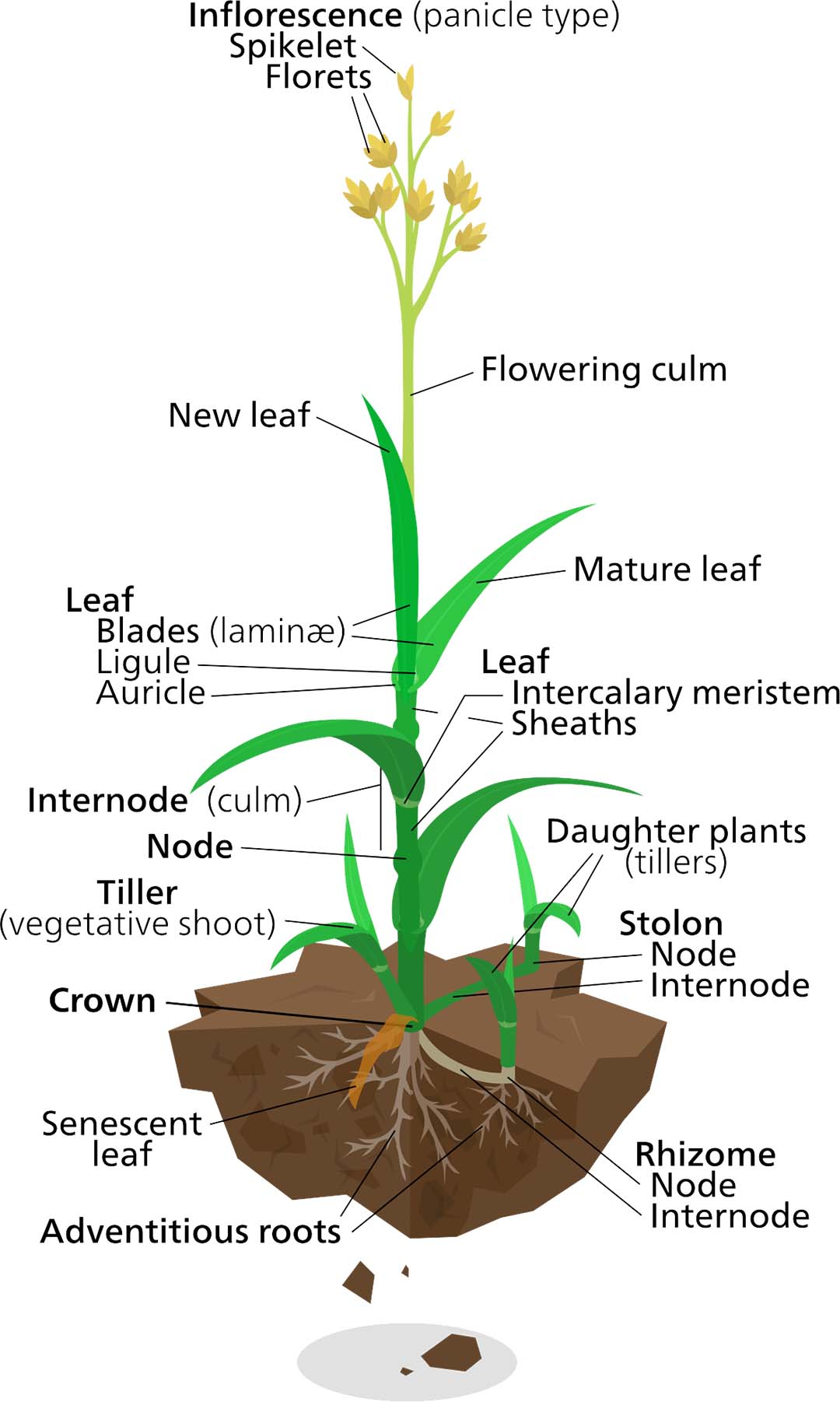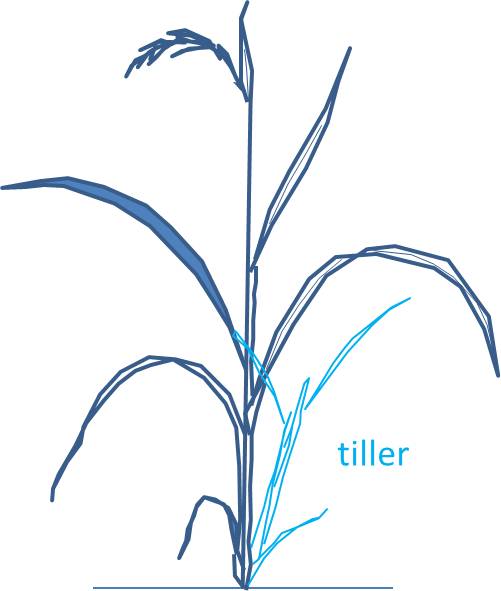Prairie:
Definitions
Grasslands
Grasslands provide the fundamental matrix that connects a mosaic of communities. They are incredibly rich biologically; they are the connective tissue between these different communities.
Grasslands cover about 33–41% of the earth’s terrestrial surface (White, et al. 2000). Grasslands are composed primarily of annual and perennial grasses and broadleaf herbaceous plants often called “forbs” or wildflowers.
- Forb is a general term used to describe any herbaceous (non-woody) plan other than grass.
- Most wildflowers are forbs.
- From the Greek phorbē, meaning fodder (American Heritage Dictionary).
Many grasslands occur as openings or as large islands called meadows within forested areas. Grasslands with trees scattered evenly throughout are called savannahs. Tree seedlings and saplings have trouble surviving in open grasslands because they are destroyed by recurring fires and foraging animals. From their beginnings, grasslands have evolved with recurring disturbances such as fire, trampling, digging, wallowing and grazing by animals. Their continued existence depends, to a large extent, upon disturbance to prevent them from being invaded and then succeeded by shrubs and trees.
- The terms grassland, prairie, and steppe have no standard definitions that precisely separate their use and are therefore considered to be synonymous by some authors (Keeler-Wolf, et al. 2007).
- In this website we use the term “grassland” to refer to the structure of the vegetation—low growing plants with few if any shrubs or trees—rather than as indicative of plant species composition. This is because wild flowers and forbs may exceed the abundance of grass species, especially in many of California's “grasslands.”
Prairie
Prairie denotes a tree-less plain dominated by grasses and forbs found in moderately dry temperate regions (Lincoln, et al. 1998).
“Prairie” is a French word derived from the Latin (“prata”) for “meadow.” It was first used by French trappers and traders, probably before LaSalle’s expedition in 1682, to describe the vast open plains of the Midwest. Although the most conspicuous plants in a prairie are often just a few species of grasses, prairies are populated by a great variety of species, including forbs, mosses, lichens, sedges, rushes, less abundant grasses, and shrubs. Kuchler (Kuchler 1964), a geologist with the U.S. Geological Survey, used the term “prairie” for:
- Short, medium and tall grasslands and savannas in the Midwest.
- Coastal and island grasslands in Texas and Louisiana.
- Cordgrass prairies (Distichlis and Spartina) along the Atlantic coast and in southeastern Texas and southern Louisiana.
Coastal Prairie
Coastal prairies occur in areas where grassland plants can obtain some moisture from fog. In the United States, areas where grasslands come into contact with fog lie predominantly along the coasts of the Pacific Ocean and Gulf of Mexico. We use “coastal prairie” to describe the California North Coast and Central Coast grasslands as this is the term most often used by ecologists (Ford and Hayes 2007; Heady, et al. 1977). California's coastal prairies, moderated by the cooling influence of the Pacific Ocean, are characterized by a vast array of plant species.
- “Prairie” better describes these types of “grasslands” because, although grasses are present, coastal prairies often contain and are sometimes even dominated by herbaceous plants and wildflowers (Truman Young, Pers. Comm. 2011).
- The term “coastal prairie” was probably first used in the literature to describe California’s coastal grasslands by L. T. Burcham (1957) in his study of California’s rangeland resources.
- Kuchler (1964) did not use the term prairie or steppe for the north coast grasslands, but called them Festuca-Danthonia grassland (dominated by Festuca idahoenis, Danthonia californica, Deschampsia holciformis) and described them as dense, medium tall meadow-like grasslands.
California Grassland
California prairie may be a better term than California grassland. Glen Holstein (2011) points out that the use of “grassland” dates from Munz and Keck's A California Flora (1959) and is based on the now questioned “bunchgrass-grazing” hypothesis proposed by ecologist Frederick Clements (1934). Prior to that, the terms most often used were California prairie or Pacific prairie. Clements based his hypothesis on “relict” stands of native bunchgrasses (Stipa, Poa, Koeleria, and Melica) he found along railways, outside of fenced pastures. He hypothesized that bunchgrasses once dominated but were eliminated by livestock grazing. It is now thought that California's “grasslands” were dominated by wildflowers instead of grasses (Minnich 2008; Holstein 2011). The wildflower hypothesis is supported by accounts from early explorers, by the writings of naturalist John Muir, and by current research (see Lulow & Young 2011).
California Annual Grassland
Non-native annual grasses such as ripgut brome (Bromus diandrus) and wild oat (Avena sp.) can be found throughout California. Although largely associated with the Central Valley, there are many coastal grasslands with an overabundance of non-native annuals. Ford and Hayes (2007) suggest that the low proportion of native species in these annual grasslands may indicate that these areas were previously cultivated. However, there could be a “vast array of species” in the soil seed bank, with the apparent dominance by non-natives an artifact of yearly variation or current management (Grey Hayes, Pers. Comm. 2012).
Annual grasslands are important because they still harbor many native plants and continue to be utilized by grassland dependent birds and other animals (CPEFS 2010; Ford and Hayes 2007; Kie 2005). Botanists surveying coastal grasslands in Sonoma and Marin Counties (CPEFS 2010) often found a surprising number of native plants in plots that at first glance looked like simple stands of non-native grasses.
Steppe
The term “steppe” is sometimes use to describe grasslands in California and probably originated with Kuchler (1964), a geologist with the U.S. Geological Survey, who used the term “California steppe” for the needlegrass grasslands (Stipa cernua, S. pulchra, S. pulchra) in the Central Valley and in the California Central Coast regions south of San Francisco. He described these grasslands as dense to medium dense, and as low to medium tall grassland. However, steppe is more often used for grasslands with varying amounts (from 20–80%) of woody shrubs (Keeler–Wolf, et al. 2007).
- “Steppe” is from Old Russian meaning “lowland” and is traditionally used to describe the vast semi-arid grass-covered plains, sometimes lightly wooded, as found in southeastern Europe, Asia and Siberia (Lincoln, et al. 1998; Morris 1978).
Rhizomatous Grasses
Rhizomatous grasses have creeping underground stems called rhizomes (and/or above ground stems called stolons) that spread out horizontally and sprout new individuals with their own stems and roots.
Grass Tillers
Most grasses vegetatively grow by producing new tillers. A tiller is a stem with leaves and roots and the ability to flower. Bunch grasses form tufts, clumps, or tussocks by repeatedly sending up tillers. The tillers remain attached, gradually forming the characteristic “bunch.”
Geophytes: Wildflowers with Underground Storage Structures
Perennial wildflowers that grow from underground structures such as bulbs, corms, rhizomes, and tubers are called geophytes. They are often long-lived herbaceous perennials with long lifespans, sometimes over 300 years (Tyler and Borchert 2007). The underground structures store nutrients and water and are usually adapted for vegetative reproduction. Many are monocots or grass-like herbs, such as iris and brodiaea. Geophytes are known to flower profusely the first spring following a fire (Tyler and Borchert 2007). However, the fire return interval needs to be long enough for the underground structures to store enough carbohydrates to support the flowering or the bulb will be depleted and die.
| Term | Underground Structure | Example |
|---|---|---|
| Bulb | Fleshy, enlarged leaf bases in layers that surround a short, disk-like underground stem | Soap plant Chlorogalum pomeridianum |
| Corm | Swollen underground stems; solid and not in layers | Harvest Brodiaea Brodiaea elegans |
| Rhizome | Enlarged horizontal underground stems | Douglas’ Iris Iris douglasiana |
| Tuber | Enlarged, short underground stems that store food reserves | Tuberous sanicle Sanicula tuberosa |
| Tuberous Root | Enlarged root that is tuber-like in appearance | Gairdner’s yampah Perideridia gairdneri |
| Storage Taproot | Thickened main root | American wild carrot Daucus pusillus |
| Caudex | Persistent, woody stem at base of plant | Coast plantain Plantago subnuda |
.djvu.jpg)

